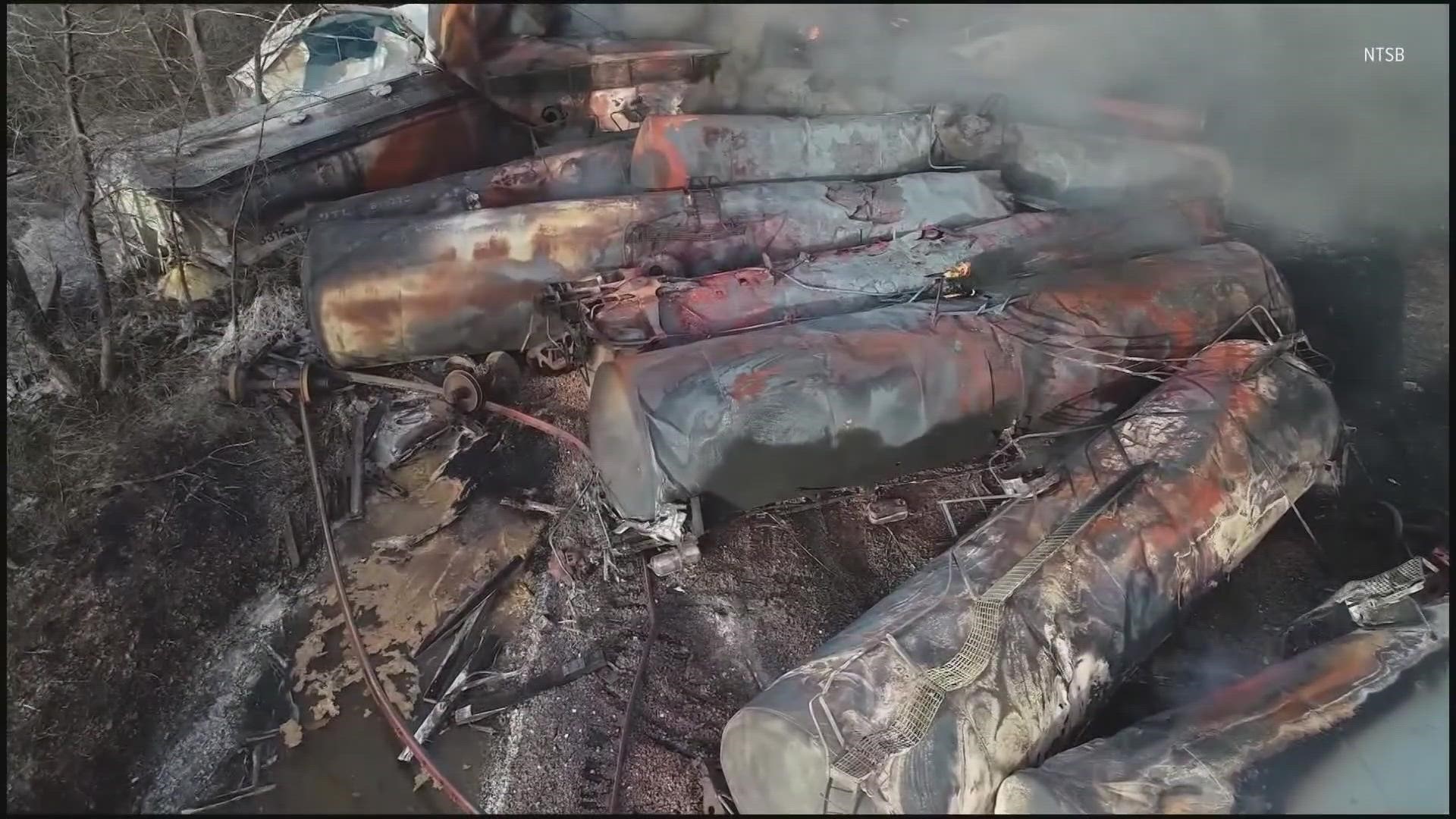COLUMBUS, Ohio — After last week's train derailment in East Palestine, many who live next to the railroad tracks have a new fear.
The derailment involving 50 cars, 10 of which were carrying hazardous materials, caused many Ohio and East Palestine officials to order evacuations for residents near the derailment. The evacuation order has since lifted and residents are able to head back home days after the incident.
The fiery crash caused five cars to slowly release vinyl chloride into the air before a crew came in and ignited it to get rid of it in a controlled area.
Now, many are saying that they will be less likely to purchase property by railroads in the future.
“I don’t think they should ever put houses so close to a train track, especially one that is used all day every day," homeowner Ashley Heilman, who lives about 100 yards from the track, said.
According to Heilman, her realtor told her when purchasing the home that she had no idea how often the trains come by.
“They literally come through here every 15 to 20 minutes, sometimes less, sometimes more and all through the night too," she said.
10TV wanted to know if railroads are required to notify the local county emergency management agencies when they are shipping hazardous chemicals.
"The vast majority of hazardous transports through the county are not required to provide notification to the EMA or local emergency preparedness committee,” said a spokesperson for the Franklin County Emergency Management Agency.
The cause of the train derailment and the inspection records are not known, but those in the railroad industry point to some possibilities as to why the train derailed.
“This train number is 35N the crew's nickname it 35 nasty because of all the headaches this train causes all the time. This train is notorious for breaking in two because of the weight and the length of the train,” Clyde Whitaker, the state director of the International Association of Sheet Metal, Air, Rail, and Transportation Workers, said.
Whitaker said railroads either lack the people to inspect trains or don’t give enough time to inspect rail cars.
“They've cut the manpower down to bare bones so they expect one or two people to go from inspecting a car from three minutes down to 90 seconds,” he said.
According to federal regulations, a carrier must forward each shipment of hazardous materials promptly and within 48 hours. After acceptance at the originating point or receipt at any yard, transfer station, or interchange point, except that where biweekly or weekly service only is performed, a shipment of hazardous materials must be forwarded on the first available train.
In terms of how rail cars are inspected, federal law says the following:
“At each location where a hazardous material is accepted for transportation or placed in a train, the carrier must inspect each rail car containing the hazardous material, at ground level, for required markings, labels, placards, securement of closures, and leakage. These inspections may be performed in conjunction with inspections required under parts 215 and 232 of this title. For each rail car containing an amount of hazardous material requiring placarding in accordance with § 172.504 of this subchapter, the carrier must visually inspect the rail car at ground level for signs of tampering, including closures and seals, for suspicious items or items that do not belong, and for other signs that the security of the car may have been compromised, including the presence of an improvised explosive device."
In a similar incident on July 11, 2012, an eastbound Norfolk Southern train derailed 17 cars within the city limits of Columbus.
Three of the cars that derailed were carrying over 86,000 gallons of denatured ethanol. Once breached, the ethanol in the tank cars ignited, fueling a large fire.
The derailment led to the evacuation of over 100 people and cost over $1.2 million.

